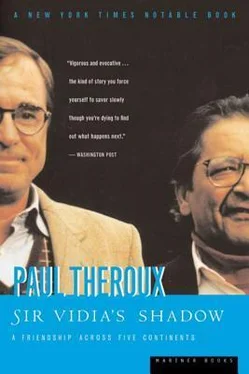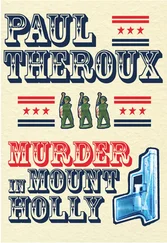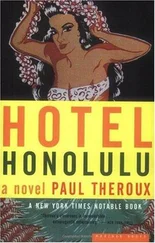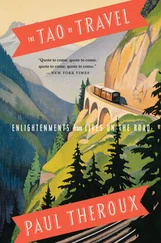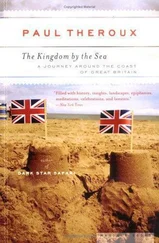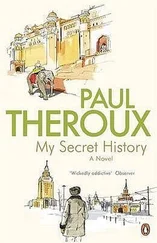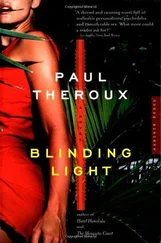I loved her for her sweetness and her unselfishness, for the way she prized great writing and fine weather and kind people. She had no time for their opposites. (“Life’s too short,” she said.)
I see her always as I first knew her, in the garden of the Kaptagat Arms in up-country Kenya, where Vidia took refuge from our political troubles in Uganda, to finish his novel. Pat sat smiling, reading in the sunshine, sometimes writing, and always alert to — just beyond the hedge of purple and pink bougainvilleas — the sound of typing.
“Thank you for the lovely and generous note about Pat,” Vidia wrote. “I told her you had sent your love. I will write more later.”
But there were no more letters, only rumors. I dismissed them as outrageous. I should have known better. In the rumors that circulated about Vidia, the most outrageous ones were usually the truest.
A little over two months after Pat Naipaul died, Vidia married again. He had fallen in love. He was unembarrassed about such passions. Even while Pat was alive, he had spoken publicly — in The New Yorker —of his pleasure in having found sexual satisfaction in middle age with Margaret in Argentina. In this same piece he also delivered himself of some choice Naipaulisms: “I have an interesting mind” and “I can’t bear flowers” and “I have no more than a hundred months left” (that was in 1994; in 1979 he had also said he had only a hundred months left) and “I can’t stand the sound of women’s voices.”
Margaret was actually named in the New Yorker piece as Vidia’s long-time lover, and was then still in the picture. “The sexual ease came quite late to me,” Vidia said to the interviewer, of Margaret, while Pat toiled in the kitchen making lunch. “And it came as an immense passion. Conrad has a lovely line: A man to whom love comes late, not as the most splendid of illusions, but like an enlightening and priceless misfortune.’”
But the new Lady Naipaul was not Margaret. She was Nadira Khannum Alvi, who had begun life in Kenya, the daughter of two transplanted Pakistanis. More than thirty years before, Vidia and I had encountered a small girl who resembled her on the verandah of a dukawallah’s shop in Nairobi. Vidia had loathed her on sight, but then, he disliked most children.
Nadira was now forty-two, a divorced mother of two teenagers. Vidia had met her at a dinner party at the home of the American consul-general in Lahore, Pakistan, in October 1995, as Pat lay dying in Wiltshire.
As with many stories about Vidia, at least two versions of their meeting existed. The first described Mrs. Alvi as an admirer of his work who approached him at the party and said, “Can I kiss you?”
“I think we should sit down,” Vidia said.
Three weeks later they decided to get married. It only remained for Pat to die before the marriage date could be fixed. In the event, it was to be April 15, 1996.
All this — the place, the name of the woman, the admiration, and “Can I kiss you?”—I read in the Daily Telegraph , which published an account by a reporter, Amit Roy, of the wedding lunch in London. The piece was neither corrected nor contradicted, something the scrupulous and insistent Vidia would have done if he had been misrepresented, so I took it as a record of facts, until someone who had been at the party in Lahore, the man who had brought them together, told me the second version.
“I introduced them at the U.S. consul’s dinner,” he said. “I wanted Naipaul to meet some characters for his book. I saw Nadira sitting at another table. I went up to her and said, ‘Guess who is here?’ and ‘I want to introduce you to him.’ She told me she did not know the name V.S. Naipaul and had never read anything by him. I then accompanied her to meet him. She went up to him at the dinner table where he was serving himself, and as I introduced them, she said, ‘How fantastic’ and ‘What an honor’ and ‘I know your work’ and then plonked a big kiss on his cheek. He blushed, but he was taken. They were together for the whole evening. The very next day he phoned me and said, ‘I don’t need your help because Nadira is taking me around and we are leaving for Bahawalpur.’ Nadira was with Naipaul in the hotel when he phoned me.”
The marriage lunch was at an Indian restaurant in South Kensington. Vidia and his new wife sat holding hands at the table. This was a new Vidia. I had never seen him hold Pat’s hand. This was a smitten Vidia, a far cry from the man who once said to me that he turned away if he saw two people kissing on television. He was also a reticent Vidia. The new Lady Naipaul did most of the talking, and her talk sounded very similar to what Vidia always referred to as “chuntering.”
“It was amazing for him to have a woman in an Islamic country walk up and kiss him,” Nadira said, explaining her unorthodox manner of introduction. “I astounded a lot of people, but I tend to do that a lot in Pakistan anyway.” (This kiss received further revision two years later in an interview in London’s Sunday Times of May 10, 1998, in which Nadira was quoted as saying, “My kiss was not some silly bimbo, fluff-headed thing… It was an act of reverence.”) Going on to describe their travels in Pakistan after they met, she said, “I think we fell terribly in love with each other.”
Nadira was a bit surprised by the suddenness. “There can be dichotomy between the writer and the person, someone you don’t want to meet again. I found the writer was the person. Here I had met a combination of a wonderful man and a man who had a vision, tremendous compassion, someone who reminded me of my past. He was my soul-mate. He was someone I had always looked for. I am madly in love with him. I think I shall always be madly in love with him.”
There was more. But knowing Vidia, this was the moment for him to cry, “Stop chuntering!”
Instead, Vidia said to the man from the Telegraph, “Do you know about Nadira, her reputation and her work? She is very famous.”
During the wedding lunch Nadira clutched Vidia’s hand and whispered, “I want you,” as the guests tucked into King Prawn Curry and Chicken Badami Korma. Among them were his agent, his old Oxford tutor, a couple of literary critics, a fellow whom Vidia unfailingly referred to as “that epicene young man,” and Harold Pinter and Lady Antonia Fraser. I was ten thousand miles away, on the slopes of Mount Haleakala.
Vidia and I had often talked about Philip Larkin. We had both bought High Windows when it was published, in the summer of 1974. Larkin’s poetry — mordant, sour, funny, right wing, cynical, elegiac, mocking, contemptuous of fame, fearful of death — matched exactly many of Vidia’s moods. In “The Whitsun Weddings,” Larkin had written of the faces at weddings,
…each face seemed to define
Just what it saw departing: children frowned
At something dull; fathers had never known
Success so huge and wholly farcical;
The women shared
The secret like a happy funeral…
Vidia had referred to Nadira’s “reputation and her work,” and had said, “She is very famous.” But surely Nadira’s celebrity was similar to that which I had enjoyed when I had been famous in Kampala and in Bundibugyo. Nadira had been famous in Bahawalpur, a small town on the Sutlej River about two hundred miles south of Lahore. She wrote a “Letter from Bahawalpur,” which appeared each week in The Nation (Lahore). Her picture accompanied the column, a passport-quality full-face halftone of a vague, unsmiling woman with bobbed hair and dark raised brows like diacritical marks over her staring eyes.
To verify Vidia’s high opinion, I got hold of a sequence of Nadira’s dispatches from Bahawalpur.
Читать дальше
